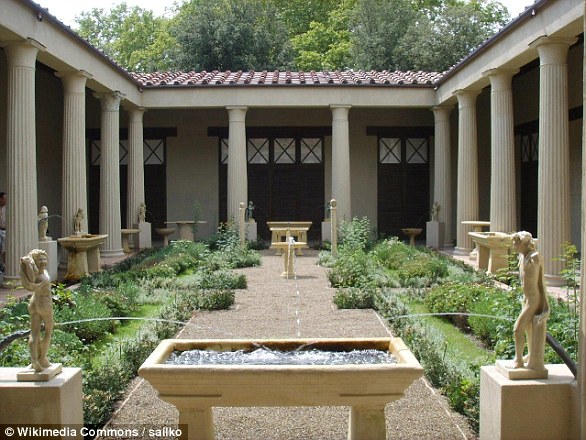‘Tomb of Cerberus’ is discovered in Italy: Sealed burial chamber features a fresco of the three-headed dog said to guard the gates of the underworld
- Fresco of a three-headed dog from ancient Greek mythology found in Italy
- Mythological scenes of ichthyocentaurs are also depicted in the Giugliano tomb
A sealed tomb featuring a fresco of Cerberus – the three-headed dog from ancient Greek mythology – has been discovered in Italy.
The burial chamber was discovered in Giugliano, a suburb of Naples, and is believed to be around 2,000 years old.
It was found on farmland during an archaeological survey carried out before the start of maintenance work on the city’s water system.
Archaeologists have previously found a large number of burial sites in the same area dating from the Roman Republic era (510-31 BC) to the Roman Imperial Era (31 BC – 476 AD).
The intact tomb contains a number of frescoes in mostly intact condition across its ceilings and walls.
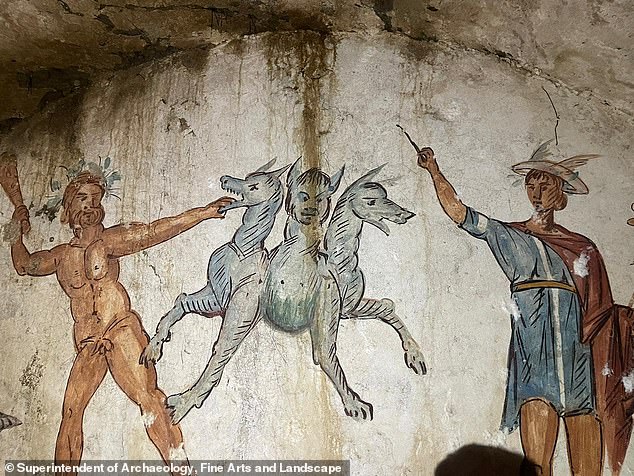
Rare find: A sealed tomb featuring a fresco of Cerberus – the three-headed dog from ancient Greek mythology – has been discovered in Italy
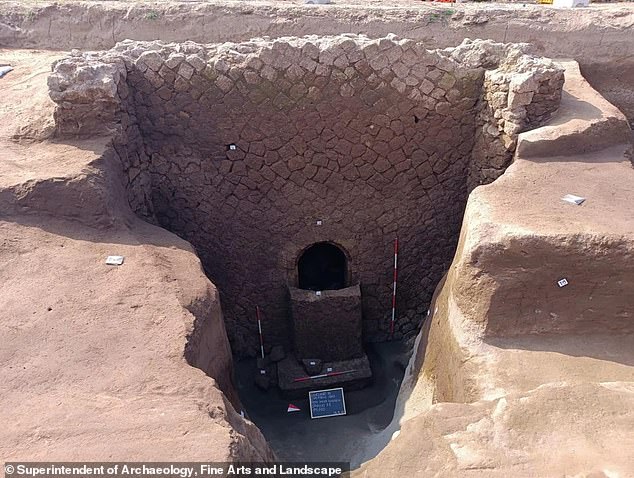
History: The burial chamber was discovered in Giugliano, a suburb of Naples, and is believed to be around 2,000 years old. It was discovered after archaeologists spotted a wall with an ancient Roman construction technique known as opus incertum
Among the most prominent mythological figures depicted is that of the three-headed dog said to guard the gates of the underworld, hence the burial chamber being called the “Tomb of Cerberus”.
The impressive painting represents the 12th and most dangerous of Hercules’ labors: when he descended into Hades led by Mercury to capture the three-headed dog monster Cerberus.
Other mythological figures painted on the walls include ichthyocentaurs – a centaurine-type sea god with the upper body of a man and the lower front half and forelegs of a horse and the tail of a fish.
The scene shown shows two ichthyocentaurs facing each other holding a athe ancient Greco-Roman shield.
Each has an erot—a Cupid-like winged infant associated with love and sexual desire—on their arm.
The burial chamber was discovered after archaeologists noticed a wall that had been built using an ancient Roman construction technique known as opus incertum.
It later turned out that this was the front wall of the tomb, which was sealed with a heavy slab of tuff – a light porous rock created from volcanic ash and other sediments.
To get inside the burial chamber, archaeologists had to carefully remove tiles covering the ceiling opening, which revealed what experts said was an ‘unprecedented’ discovery.
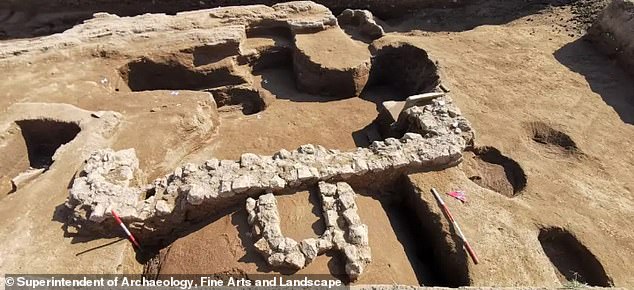
To get inside the burial chamber, archaeologists had to carefully remove tiles covering the ceiling opening, which revealed what experts said was an ‘unprecedented’ discovery.
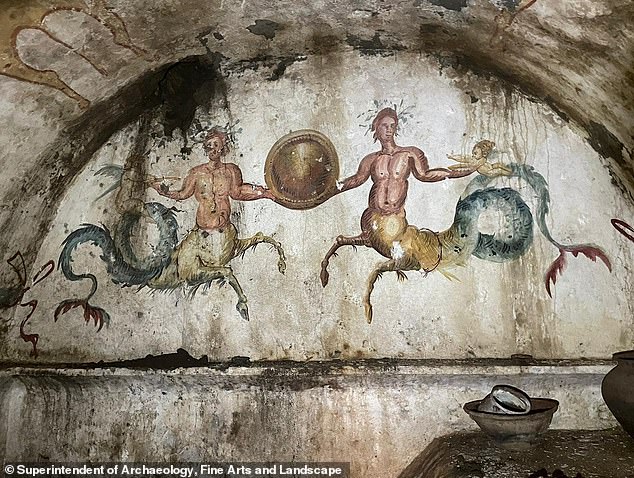
Mythology: Among the most prominent mythological figures depicted are the ichthyocentaurs – a centaurine-type sea god with the upper body of a man and the lower front half and forelegs of a horse and the tail of a fish (photo)
The tomb has frescoed ceilings and walls in perfect condition, with mythological scenes running throughout the room and figurative representations among which a three-headed dog stands out, said Mariano Nuzzo, the superintendent of Archaeology, Fine Arts and Landscape. metropolitan area of Naples.
“Three painted klīnai, an altar with libation vessels, the deceased still placed on funeral beds with rich objects – complete the picture of a discovery that, in this area, is unprecedented.”
Now the work is continuing for the even bigger excavation of the grave without damaging its contents.
Nuzzo added: “The emotion evoked by the privilege of such a discovery is indescribable.
“The territory of Giugliano, after years of oblivion, is finally returning important traces of its glorious past, to be preserved and protected, thanks to a common effort.”
(tagsTranslate)daily mail(s)sciencetech

